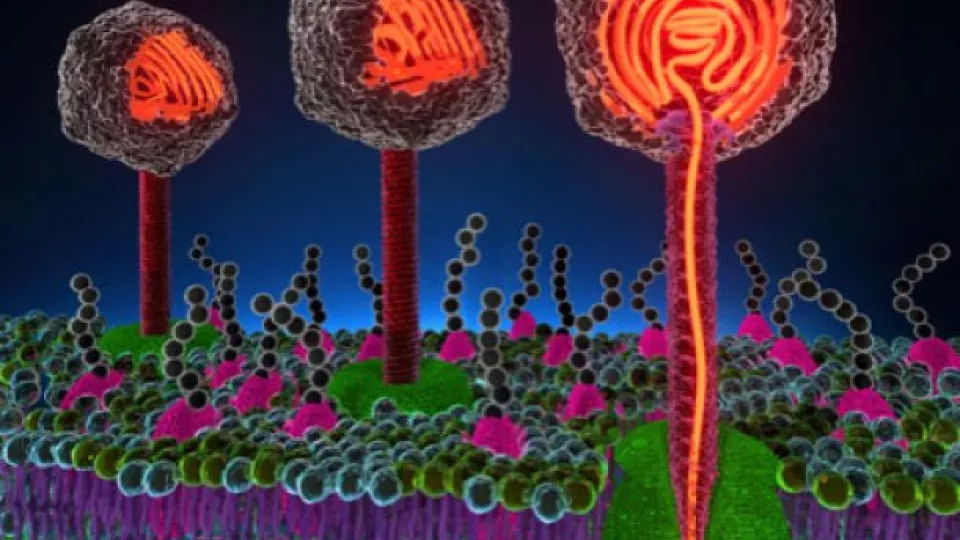“This knowledge is important in order to stop the spread of viral infections in the long term”, says researcher Alex Evilevitch.
Alex Evilevitch and his research team at Lund and Illinois universities have shown that a previously unknown mechanism determines how fast bacteriophages – i.e. viruses that infect bacteria – inject their DNA into bacteria.
“We saw that the actual mechanism of how the DNA is packaged affects how quickly the virus injects its DNA into the bacterium”, says Alex Evilevitch, virus researcher at Lund University. He argues that it is likely that the mechanism, which the researchers studied in bacterial viruses, also applies to viruses that infect humans and animals.
Viruses propagate in two different ways. The first way, known as a lytic course of infection, is when virus particles kidnap the host cell’s machinery, produce hundreds of new copies of themselves, kill the cell and then spread their copies further into the organism.
The second way, a latent course of infection, is when virus particles infect the host cell with their DNA, after which the viral DNA remains in the cells on “standby” mode. When the host cell divides, the virus is divided and spreads with the new copy of the host cell. When infection is synchronised – tens of virus particles simultaneously attacking the bacterium - the infection is likely latent, while if infections are uncoordinated the infection is likely lytic. A major challenge in virology has been to figure out what determines which of the two courses of infection will take place.
To solve this question, Alex Evilevitch and his colleagues studied what happens when viruses known as bacteriophages inject their DNA into E. coli bacteria. They discovered the mechanism which determines if infection is synchronised or random. The researchers also showed that conditions such as temperature and ionic strength in the environment enable or disable this synchronisation, much like a relay, by affecting the packaged DNA structure inside the virus.
“Knowledge of what determines whether a virus lies dormant inside the body, or if it spreads rapidly causing symptoms, is important in order to stop the spread of viral infections in the long term”, concludes Alex Evilevitch.
Publication: The mobility of packaged phage genome controls ejection dynamics
Contact:
Alex Evilevitch, viral researcher at Lund University and the University of Illinois
+1 217 898 75 84
Alex [dot] Evilevitch [at] med [dot] lu [dot] se
